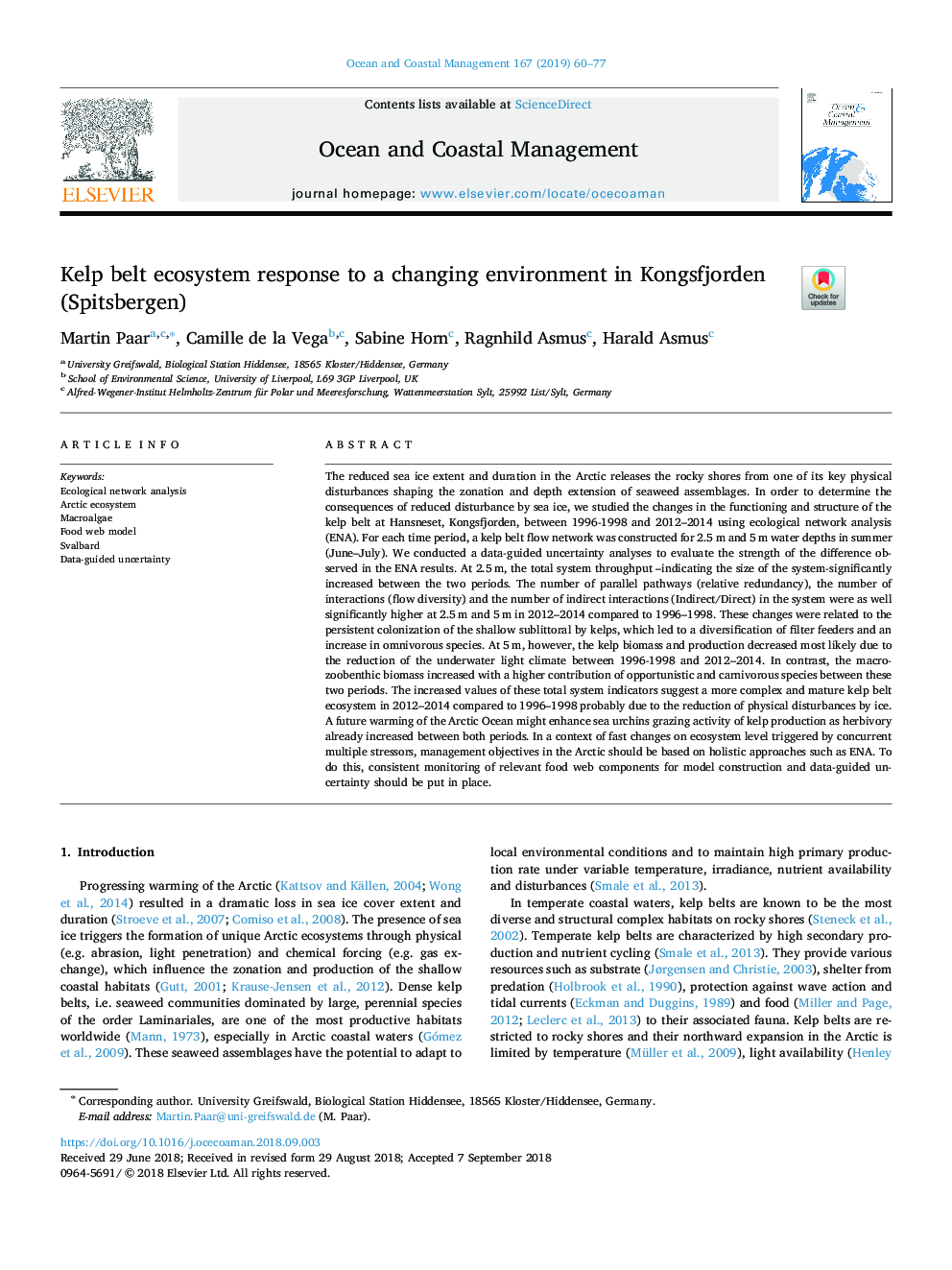| کد مقاله | کد نشریه | سال انتشار | مقاله انگلیسی | نسخه تمام متن |
|---|---|---|---|---|
| 11262906 | 1803253 | 2019 | 18 صفحه PDF | دانلود رایگان |
عنوان انگلیسی مقاله ISI
Kelp belt ecosystem response to a changing environment in Kongsfjorden (Spitsbergen)
دانلود مقاله + سفارش ترجمه
دانلود مقاله ISI انگلیسی
رایگان برای ایرانیان
کلمات کلیدی
موضوعات مرتبط
مهندسی و علوم پایه
علوم زمین و سیارات
اقیانوس شناسی
پیش نمایش صفحه اول مقاله

چکیده انگلیسی
The reduced sea ice extent and duration in the Arctic releases the rocky shores from one of its key physical disturbances shaping the zonation and depth extension of seaweed assemblages. In order to determine the consequences of reduced disturbance by sea ice, we studied the changes in the functioning and structure of the kelp belt at Hansneset, Kongsfjorden, between 1996-1998 and 2012-2014 using ecological network analysis (ENA). For each time period, a kelp belt flow network was constructed for 2.5â¯m and 5â¯m water depths in summer (June-July). We conducted a data-guided uncertainty analyses to evaluate the strength of the difference observed in the ENA results. At 2.5â¯m, the total system throughput -indicating the size of the system-significantly increased between the two periods. The number of parallel pathways (relative redundancy), the number of interactions (flow diversity) and the number of indirect interactions (Indirect/Direct) in the system were as well significantly higher at 2.5â¯m and 5â¯m in 2012-2014 compared to 1996-1998. These changes were related to the persistent colonization of the shallow sublittoral by kelps, which led to a diversification of filter feeders and an increase in omnivorous species. At 5â¯m, however, the kelp biomass and production decreased most likely due to the reduction of the underwater light climate between 1996-1998 and 2012-2014. In contrast, the macrozoobenthic biomass increased with a higher contribution of opportunistic and carnivorous species between these two periods. The increased values of these total system indicators suggest a more complex and mature kelp belt ecosystem in 2012-2014 compared to 1996-1998 probably due to the reduction of physical disturbances by ice. A future warming of the Arctic Ocean might enhance sea urchins grazing activity of kelp production as herbivory already increased between both periods. In a context of fast changes on ecosystem level triggered by concurrent multiple stressors, management objectives in the Arctic should be based on holistic approaches such as ENA. To do this, consistent monitoring of relevant food web components for model construction and data-guided uncertainty should be put in place.
ناشر
Database: Elsevier - ScienceDirect (ساینس دایرکت)
Journal: Ocean & Coastal Management - Volume 167, 1 January 2019, Pages 60-77
Journal: Ocean & Coastal Management - Volume 167, 1 January 2019, Pages 60-77
نویسندگان
Martin Paar, Camille de la Vega, Sabine Horn, Ragnhild Asmus, Harald Asmus,